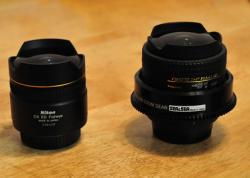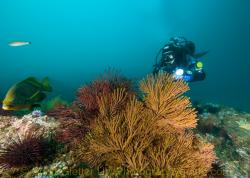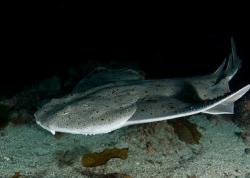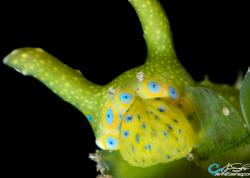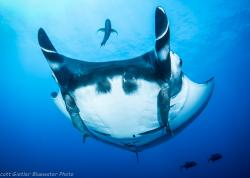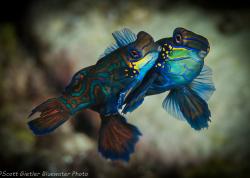Pacific Seahorse Facts & Underwater Photos
Pacific Seahorse, Hippocampus Ingens
Last year, while researching juvenile fish, I started to looking into seahorse facts and habitat, after finding out that the Pacific Seahorse range recently extended into California. I started doing more research and making phone calls.
I knew someone who had actually seen a couple seahorses underwater, and was even told a photo was snapped of one, so I knew I had at least a small chance of success, even though I didn't know exactly what a seahorse in San Diego would look like (the only photos available to me was of a Pacific seahorse in a sea fan from Baja or the Galapagos), or where exactly one would be.
It took many hours and many trips to San Diego to actually find a Pacific Seahorse. I found two individuals, on different days. One of them was even giving birth when I found it.
Seeing the seahorse was one of the most wonderful moments underwater that I've ever had. Another great moment was swimming with Dolphins underwater near Catalina, which I'll write about at another time. They are beautiful, elegant fish - yet quite shy in the presence of a large diver.
These seahorse are not small, they are quite large, almost 12 inches long.
Below, in the first two photos, you'll see the first seahorse I found, the one that gave birth. Notice the anemone growing on it's head. That's right, it's an anemone, attached to it's head.
Photos are copyrighted and no form of reproduction is authorized, all rights reserved.
Pacific Seahorse Facts
Where does the Pacific Seahorse live?
The Pacific seahorse enjoys calm water where it can hide in algae. Your not likely to see them in the rough parts of the ocean. Unfortunately, these Seahorses would command a pretty penny in certain markets so it's best that I not give their exact location or they would be scooped up. The Pacific seahorse range is Peru and the Galapagos islands to Southern California.
Pacific Seahorse Habitat
The Pacific seahorse lives in a wide variety of habitats at very different depths. They can be found deep living on sea fans where they attach their tails, or shallow in eelgrass or thick algae. In both cases, the three-dimensional structure of their habitat acts as a biological facilitator, allowing the seahorse to blend and wait until mysid or juvenile fish come by.
Pacific Seahorse predators and diet
Seahorses in California seem to have few predators, and lots to eat. On my dives I noticed plenty of Mysid shrimp and tiny juvenile fish that the seahorse enjoys eating. Seahorse have no teeth, instead food gets quickly sucked into their mouth, with a quick jerk of their head.


Pacific seahorse, with it's belly full of hundreds of babies. The male seahorse gives birth to the babies. Underwater photo taken with my Nikon D300, 60mm macro lens, in low visibility water.

Second individual seahorse that I found, trying to hide in the Eelgrass
See more Hippocampus ingens (Pacific Seahorse) Photos
See photos of the second individual that I found, plus older photos of other seahorses in San Diego
Please leave a comment if you enjoyed seeing the Seahorses! And sign up for our newsletter
You can also contact the author or email him at scott@uwphotographyguide.com
Further Reading
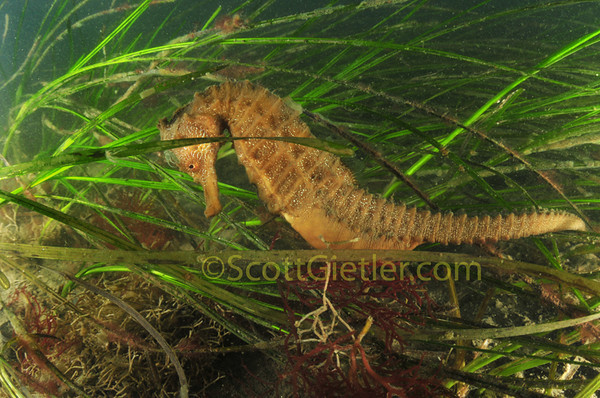
RECOMMENDED ARTICLES
SUPPORT THE UNDERWATER PHOTOGRAPHY GUIDE:
The Best Service & Prices on u/w Photo Gear
 Visit Bluewater Photo & Video for all your underwater photography and video gear. Click, or call the team at (310) 633-5052 for expert advice!
Visit Bluewater Photo & Video for all your underwater photography and video gear. Click, or call the team at (310) 633-5052 for expert advice!
The Best Pricing, Service & Expert Advice to Book your Dive Trips
 Bluewater Travel is your full-service scuba travel agency. Let our expert advisers plan and book your next dive vacation. Run by divers, for divers.
Bluewater Travel is your full-service scuba travel agency. Let our expert advisers plan and book your next dive vacation. Run by divers, for divers.




